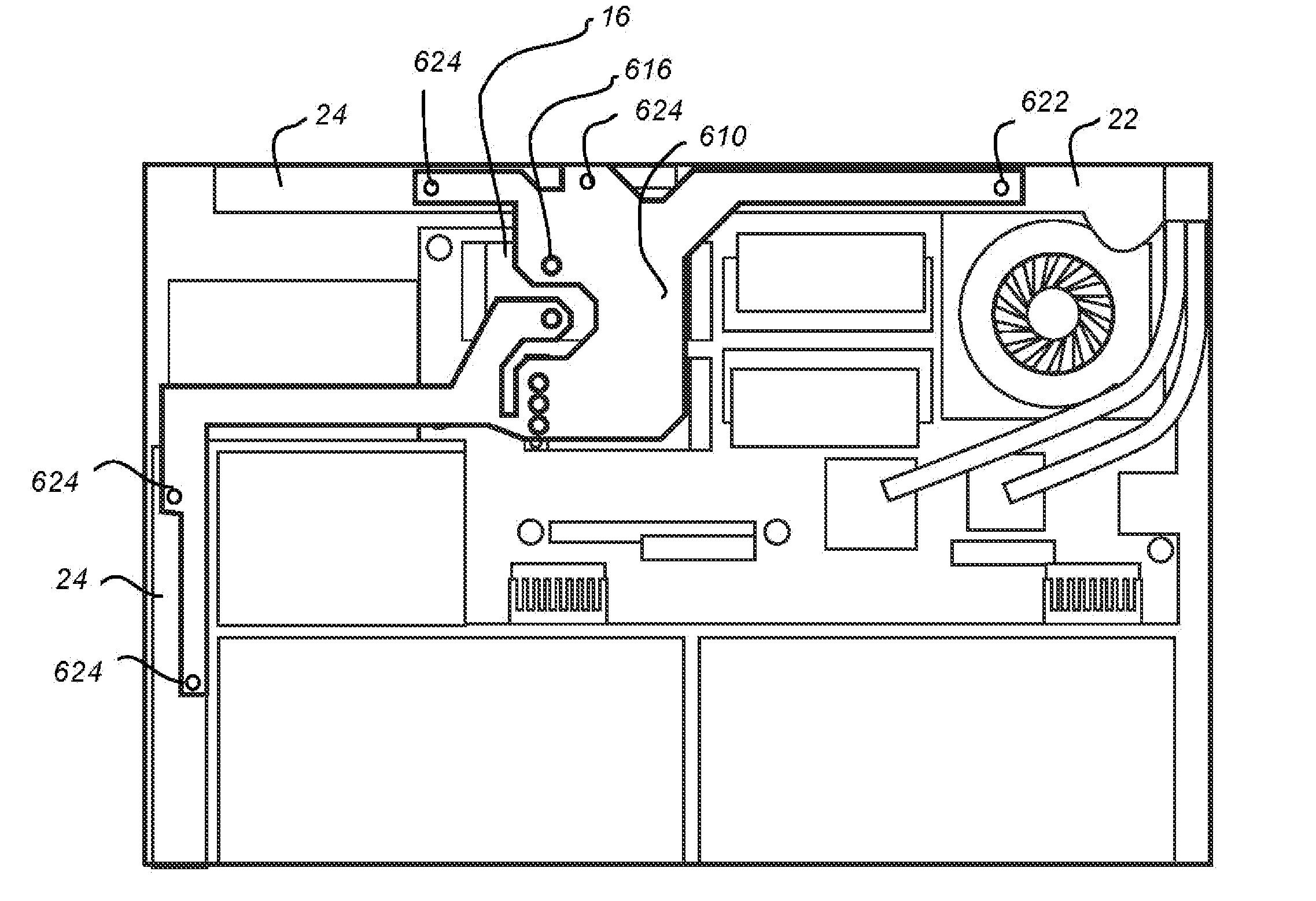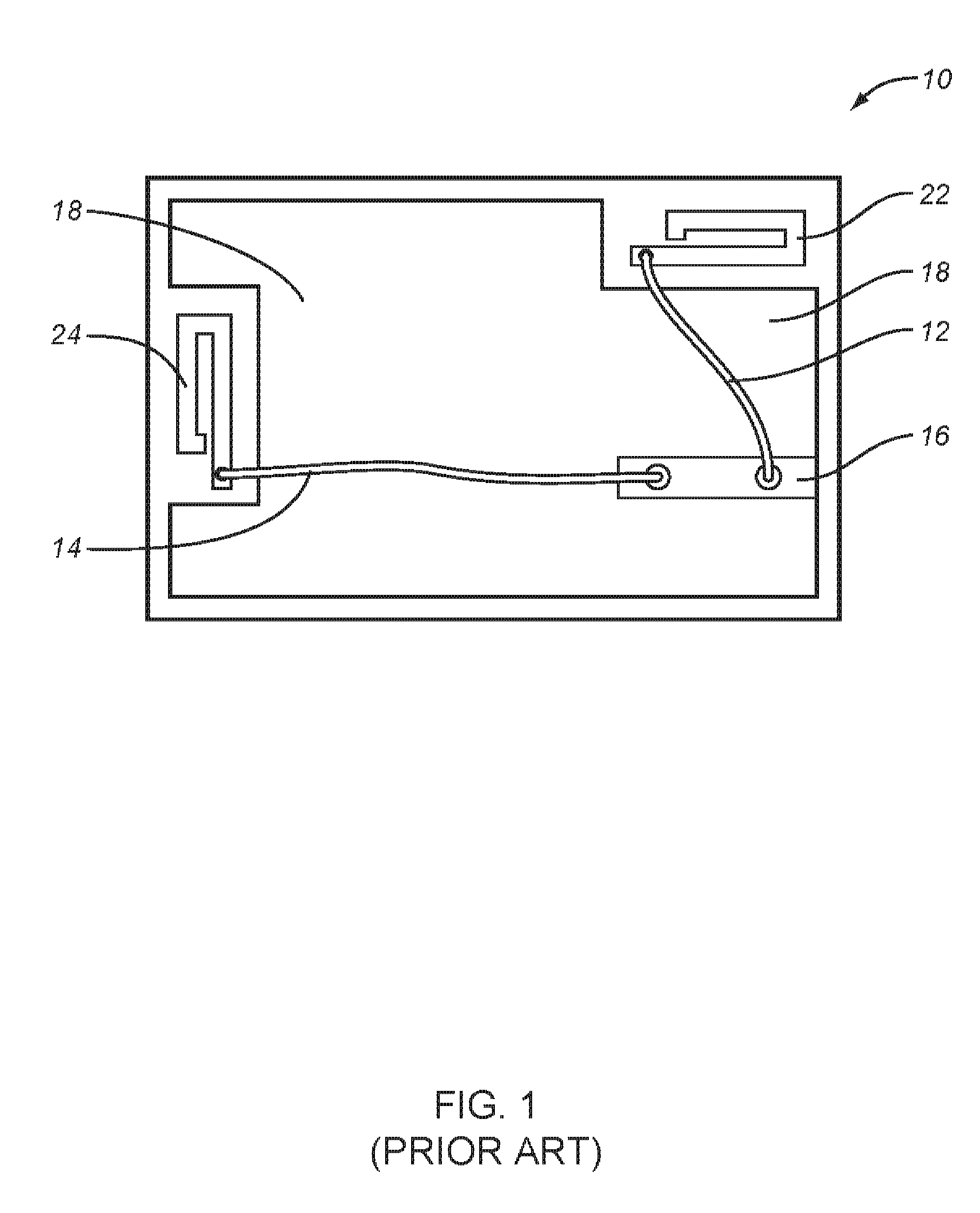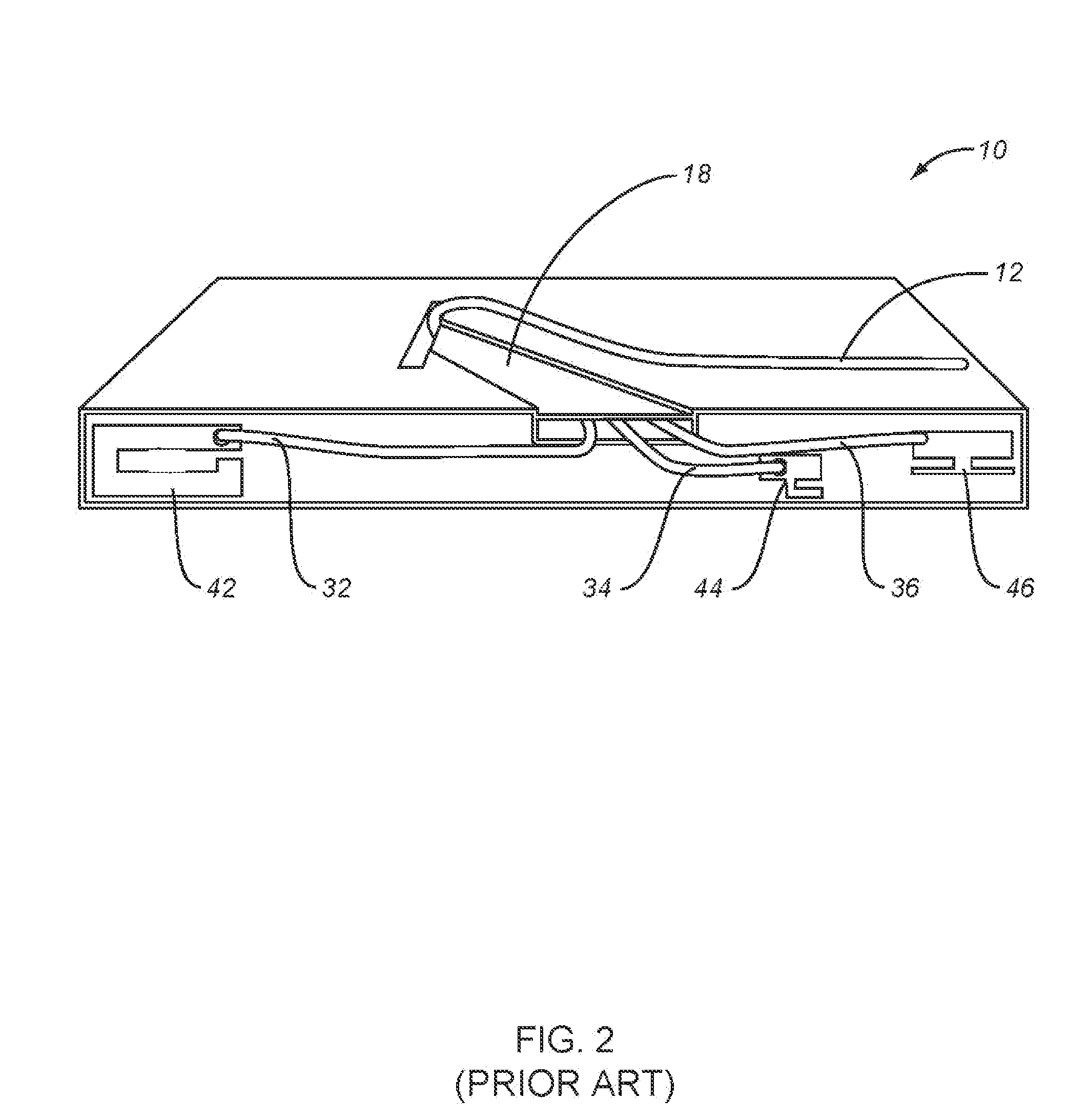Method for assigning control channels
a control channel and channel technology, applied in the field of electrical interconnection, can solve the problems of stalling of the ‘mini and ‘micro’ coaxial wiring/rf radio industry, difficult manufacturing, and inability to achieve ideal performance in many rf design areas
- Summary
- Abstract
- Description
- Claims
- Application Information
AI Technical Summary
Problems solved by technology
Method used
Image
Examples
Embodiment Construction
[0051]Preferred embodiments of the present invention are illustrated in the FIGUREs, like numerals being used to refer to like and corresponding parts of the various drawings.
[0052]The present invention generally relates to connecting wireless transmitter and / or receiver components electronic devices. For this purpose the invention employs the use of flexible circuit boards—particularly flexible printed circuits (FPC) technology. Devices with prior art micro-wire connections were discussed above in regards to FIG. 1, FIG. 2, FIG. 3, FIG. 4 and FIG. 5. Typical micro-wires have a diameter of approximately 1.37 mm (54 mil). Using FPCs the applicants have made connectors which are less than 0.50 mm (20 mils) in thickness which are drastically less susceptible to kinking, crushing, crimping or other hazards mentioned above.
[0053]FIG. 6 illustrates a simple embodiment of an FPC RF electrical connector 100 according to the present invention. It is comprised of the FPC section 110 and two s...
PUM
 Login to View More
Login to View More Abstract
Description
Claims
Application Information
 Login to View More
Login to View More - R&D
- Intellectual Property
- Life Sciences
- Materials
- Tech Scout
- Unparalleled Data Quality
- Higher Quality Content
- 60% Fewer Hallucinations
Browse by: Latest US Patents, China's latest patents, Technical Efficacy Thesaurus, Application Domain, Technology Topic, Popular Technical Reports.
© 2025 PatSnap. All rights reserved.Legal|Privacy policy|Modern Slavery Act Transparency Statement|Sitemap|About US| Contact US: help@patsnap.com



